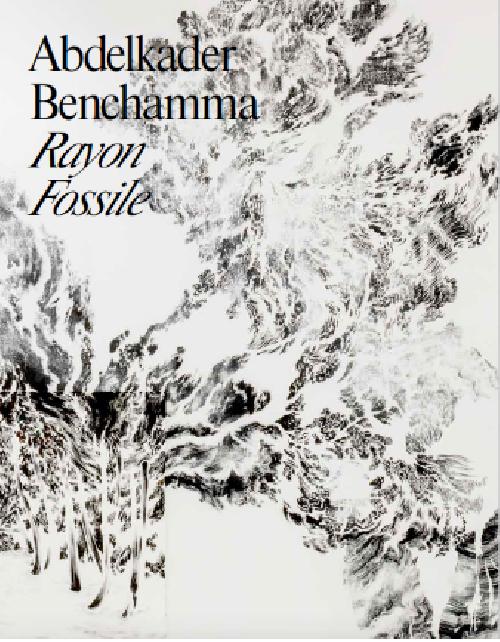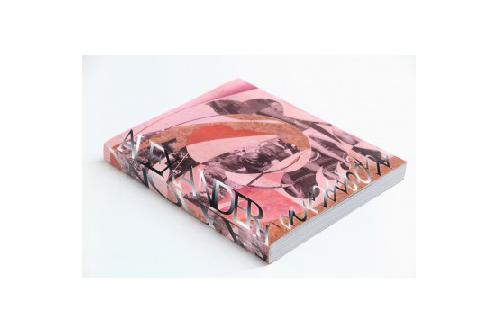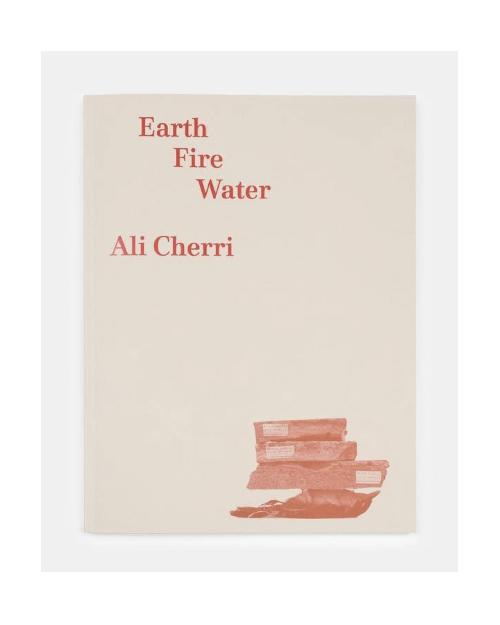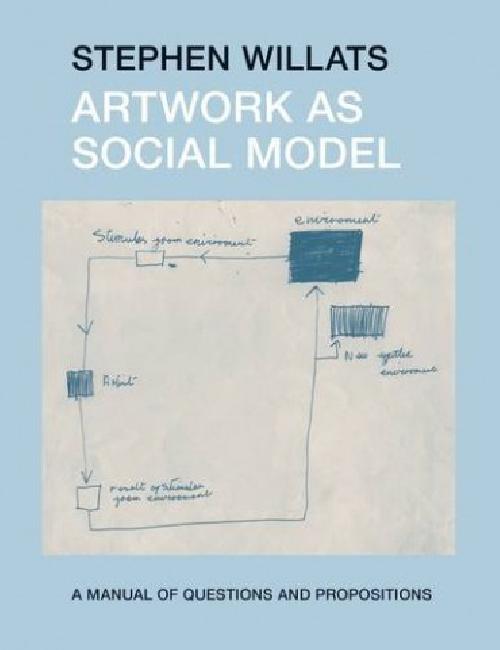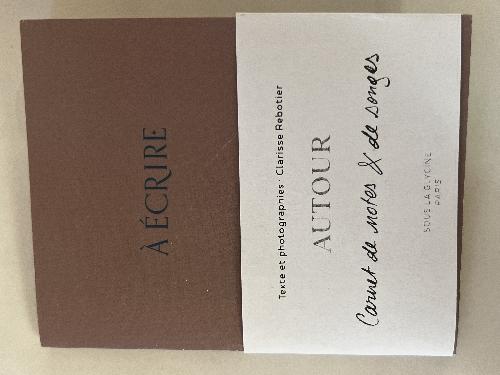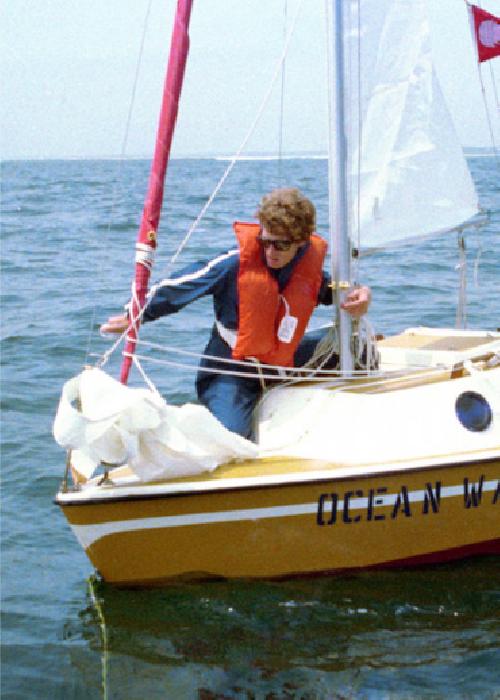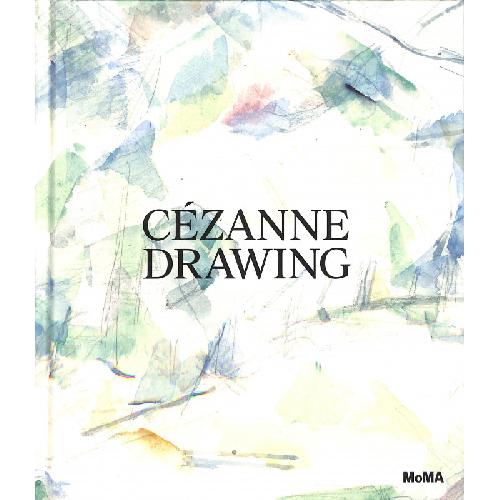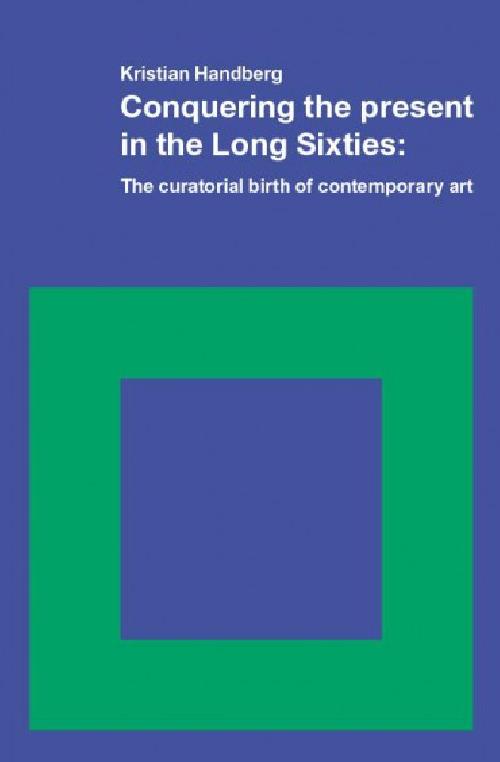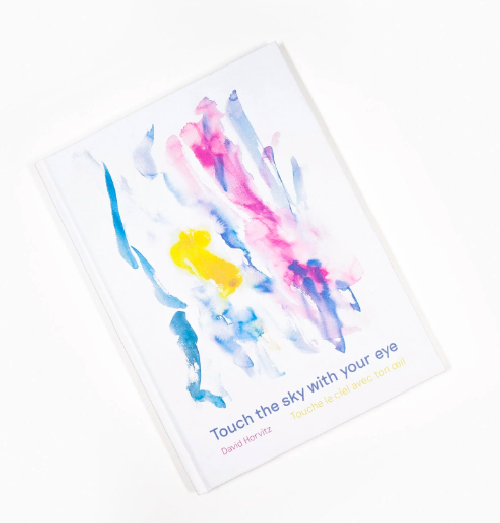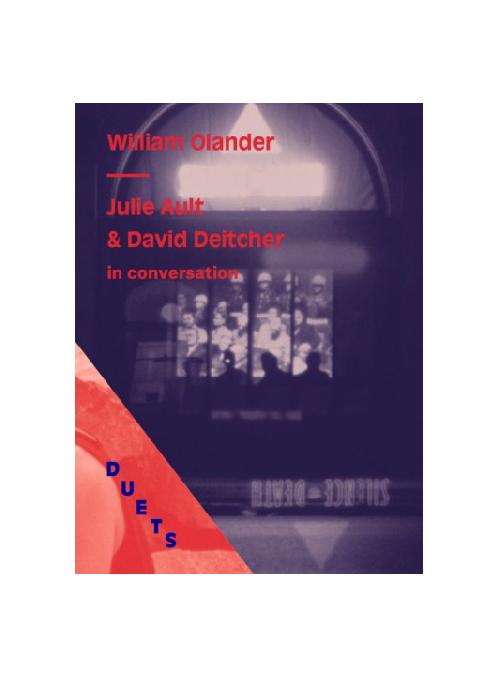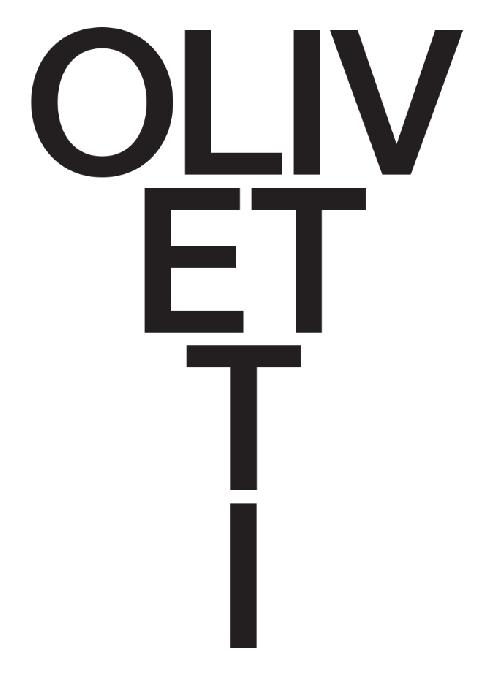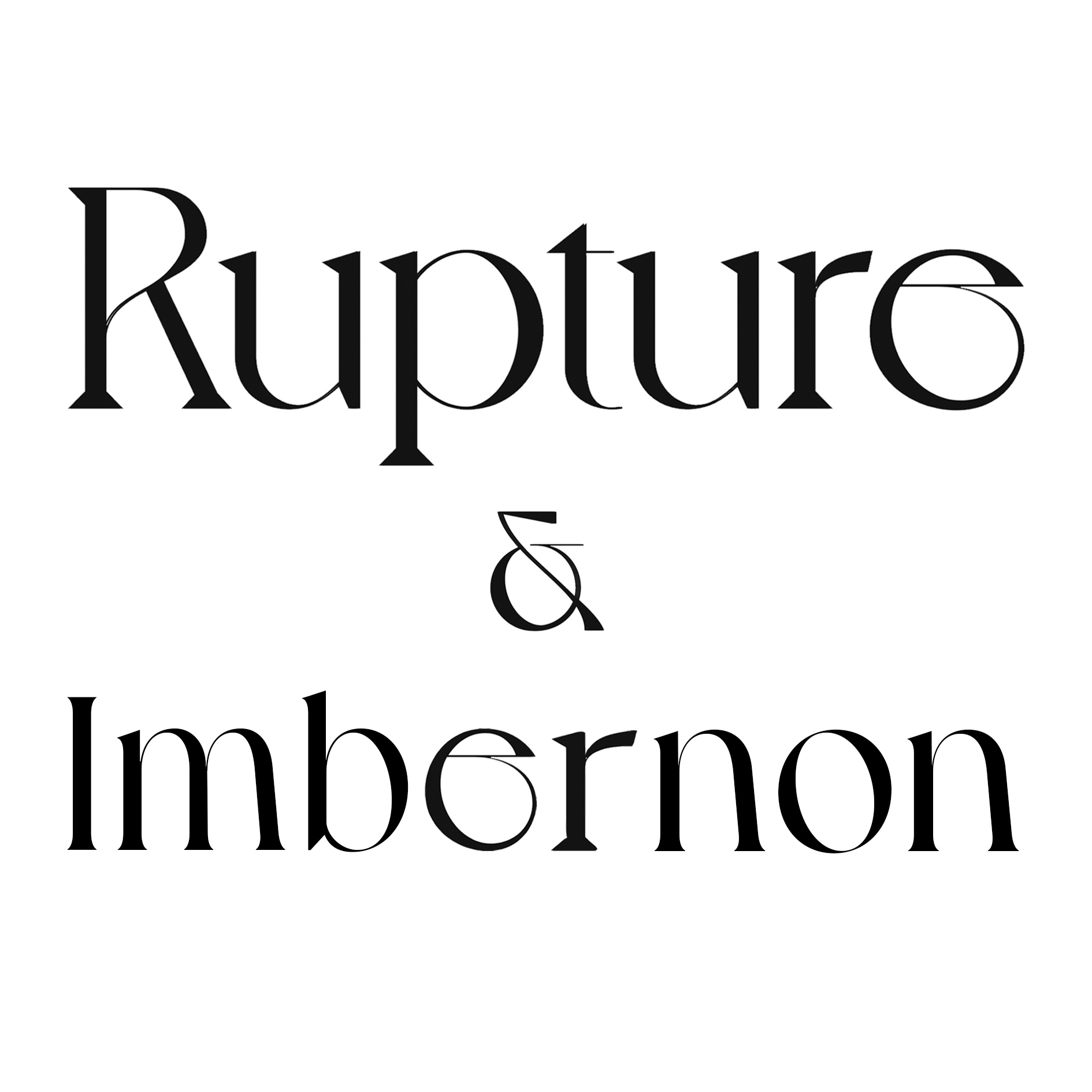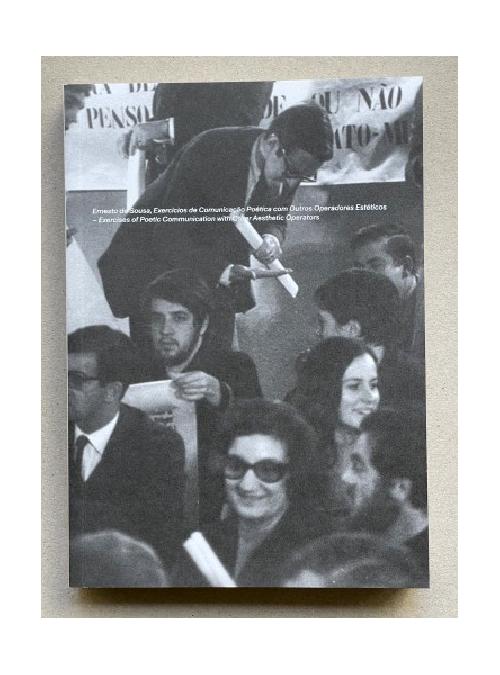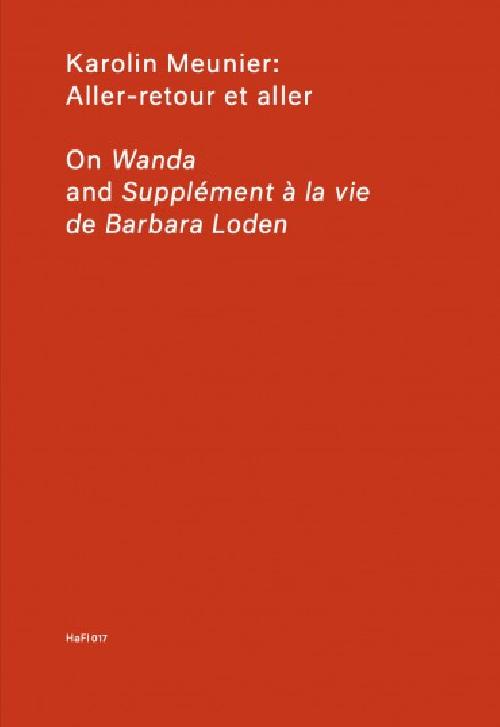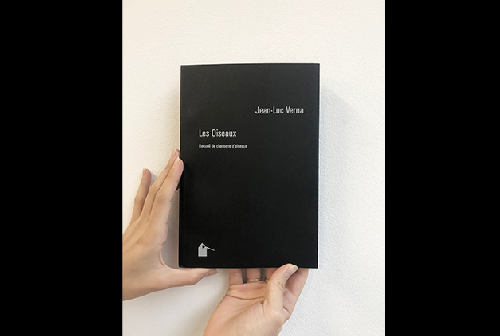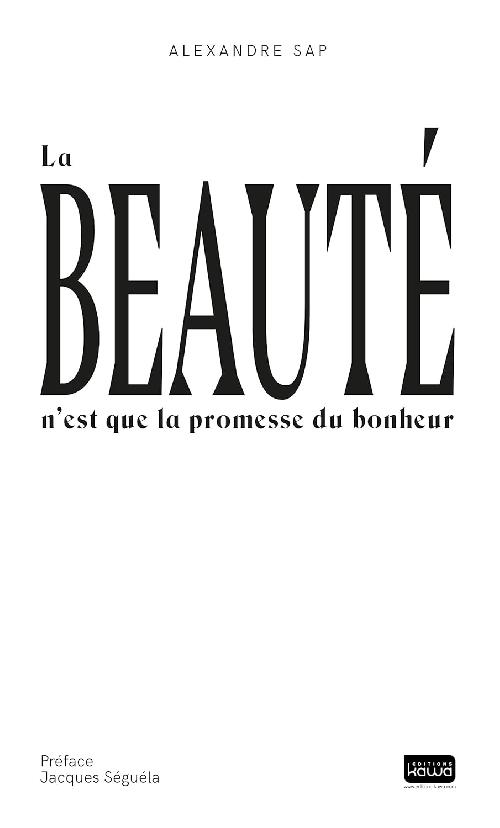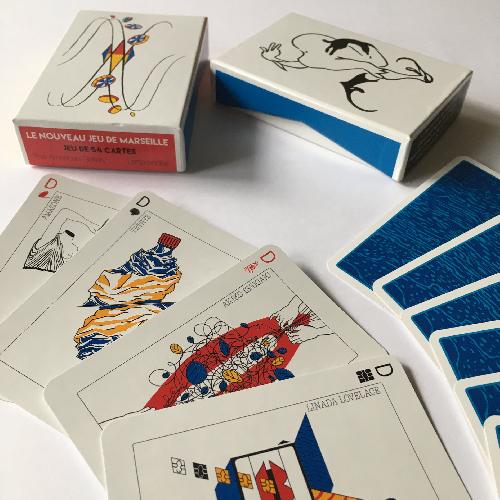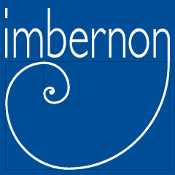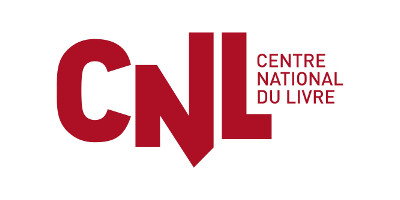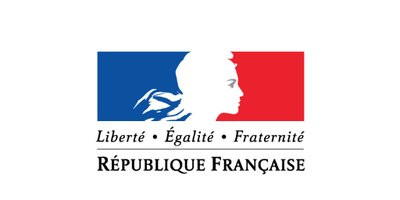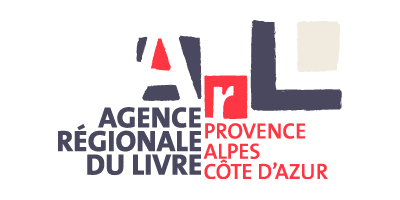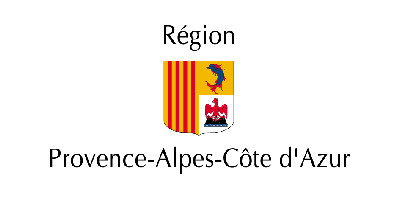Filtrer par
-
Trier par :
Ouvrage publié à l’occasion de l’exposition présentée à la Collection Lambert en Avignon du 30 octobre 2021 au 20 février 2022.
- Coédition Collection Lambert / Actes Sud
- Entretien avec l’artiste, textes de Stéphane Ibars et Marc Donnadieu
- Graphisme My Name Is
- Edition bilingue (français/anglais)
- 22 x 28 cm, 176 pages, 75 images
- Parution en novembre 2021
- Prix public : 35 €
- ISBN : 978-2-330-14499-9
The catalog “Alexander Wolff – Picturesque” collects and displays Alexander Wolff's works from the past 15 years.
In addition to texts on the work of Alexander Wolff by Camila McHugh, Nikola Dietrich, Christian Egger, Kerstin Cmelka, Nora Schultz, Ariane Müller, Sabrina Soyer, also an essay by Marcelin Pleynet entitled "Painting and 'Reality’" from 1969 - translated from French into English for the first time.
sowie Textbeiträge von
Camila McHugh, Nikola Dietrich, Christian Egger, Kerstin Cmelka, Nora Schultz, Ariane Müller, Sabrina Soyer.
Des weiteren findet sich hier auch ein großer Essay von Marcelin Pleynet mit dem Titel
„Painting and ‘Reality'“ aus dem Jahr 1969 – erstmals aus dem Französischen ins Englische übersetzt.
This publication is the first monograph by Ali Cherri. Through an introduction by the artist, four essays and an interview, this book reveals the political, aesthetic and dreamlike dimensions of a work that the artist has been developing for over fifteen years.
Born in Beirut, Ali Cherri lives and works between Beirut and Paris. He belongs to this generation of Lebanese artists born during the civil war whose work has been strongly affected by this context of instability.
Texts by Ali Cherri, Aaron Cezar, Tarek El-Ariss, Nicole Brenez, Hannah Feldman, Roxana Azimi.
Stephen Willats’ art practice addresses contemporary social and cultural issues. His polemic takes ideas beyond the norms and conventions of the object-based art world, to explore possibilities inherent within communal groups.
In many of his projects he has collaborated with members of diverse communities in a variety of everyday settings, initiating interventions that build on the richness and complexity of self-organisation to determine and reinforce a sense of identity.The result is a body of artworks with a dynamic, interactive, social function.
This manual, which includes texts, interviews and artwork from five decades of practice, is intended as a tool for any artist or practitioner looking to find a meaningful relationship with contemporary society. It proclaims, and argues for, a culture that promotes the fluid, transient, relative and complex society from which it stems.
Edited by Marion van Wijk and Koos Dalstra
First Edition (2017)
In 1976, Bas Jan Ader’s boat, the Ocean Wave, was found unmanned and partially submerged 150 miles off the coast of Ireland by a Spanish fishing vessel. The Dutch artist’s boat was taken to La Coruña for investigation. Days later, the boat was stolen and the cult of Ader, whose body was never recovered, was truly cemented. In this volume, artists Marion van Wijk and Koos Dalstra, compile ten years of research into this unsolved mystery. The Spanish police report documenting the theft is reproduced in facsimile alongside a translation into English, many pages of additional documentation, and the transcriptions of interviews produced during the editors’ investigations.
The report itself begins on April 27, 1976 and ends on February 1, 1977 and documents history of the Ocean Wave from the discovery of the vessel to the closure of the case. This book is an expanded version of the earlier edition by Veenman Publishers. It includes interviews with Mary Sue Anderson, Don Couto, Charles Esche, and Luis Ramos.
| Année de parution | 2021 |
| Nombre de pages | 216 |
| Format | 23,5 x 27,5 cm |
| Photos | Oui |
| dont couleurs | Oui |
| Reliure | Relié |
| Langue | Anglais |
| ISBN | 978-1633451261 |
| Editeur | MoMA |
Conquering the present in the Long Sixties is an art historical essay. The book presents a new understanding of the art work in the 1960s and how a predominant interest in the present formed contemporary art as we know it today. A wide range of examples of the era’s artistic experiments, curatorial visions, and new institutions, and even the protest actions against them, show an intense discussion of the contemporary condition. According to Kristian Handberg, this situation can be explained through the concept of Gegenwardsbewältigung: a way of working-through the present that is actively conquering and critically reflexive and that is carried out by individual artists as well as whole institutions. The book presents a rendition of the Sixties art world, which takes us through a new reading of the triumph of total abstraction at documenta as a focus on the contemporary, the significance of Scandinavian art museums for the breakthrough of American Pop Art, a Soviet cosmonaut as exhibiting artist at the Venice Biennale in the midst of the turmoil of 1968, and the legendary documenta 5 exhibition in 1972 as a Wunderkammer of the whole Sixties.
Un abécédaire d'actions poétiques à réaliser dès que possible. Touch the sky with your eye est un livre d’artiste pour enfant conçu par le plasticien américain David Horvitz. Prenant la forme d’un abécédaire bilingue, il offre au jeune public de se familiariser avec 26 mots et notions en anglais et français. Cette publication est également l’occasion de développer pour chaque lettre une action performative pour en faire un recueil d’instructions poétiques. S’inscrivant dans la tradition des livres d’actions conceptuelles, David Horvitz propose pour Jean Boîte Éditions un long poème qui replongera les adultes dans l’imaginaire des enfants tout en permettant à ces derniers de porter une attention particulière à la nature qui les entoure, de jouer avec la notion étirable du temps ou de vouloir déplacer l’immatérialité de certains éléments. De « Dans une forêt, trouve un arbre aussi haut que toi » en passant par « Écrit un poème à une montagne », l’ensemble des propositions est richement illustré par 26 aquarelles de David Horvitz, et traduit en français par l’artiste Julien Bismuth.
Graphisme : Joanna Starck
Publié en 2019
Anglais / Français
195 mm x 265 mm
64 pages
ISBN 978-2-36568-028-8
© JBE Books
Julie Ault and David Deitcher illuminate the life and work of the influential art historian, New Museum curator, and Visual AIDS co-founder William Olander (1950–1989). Olander’s exhibitions challenged oppressive institutional boundaries, blew open dichotomies, and boldly confronted discrimination, sexual difference, and AIDS, shaping curatorial practice for decades to come.
Committed to using the New Museum as a platform to challenge the ideological functions of the art world, Olander invited members of ACT UP to design a multimedia installation for the museum’s window on Broadway in 1987. The first museum project to unflinchingly address the AIDS epidemic and the political figures who enabled it, Let the Record Show... became the centerpiece of art historian and critic Douglas Crimp’s impassioned call for “new cultural practices” to respond to AIDS.
Ault and Deitcher’s conversation offers new insights into the through-lines of Olander's career, from his graduate research on the French Revolution to exhibitions at the Allen Memorial Art Museum and his later engagement with AIDS activism.
Includes selected writings by Olander and an afterword by Kyle Croft.
DUETS is a series of publications that pairs artists, activists, writers, and thinkers in dialogues about their creative practices and current social issues related to HIV/AIDS. These engaging and highly readable conversations highlight the connections between communities of artists and activists. Drawing from the Visual AIDS Artist Registry and Archive Project, this series continues Visual AIDS’ mission to support, promote, and honor the work of artists with HIV/AIDS and the artistic contributions of the AIDS movement.
Le premier recueil d'écrits et de discours traduits en français d'Adriano Olivetti (1901-1960), entrepreneur et éditeur italien qui a transformé son usine d'appareils d'écriture et de calcul en un laboratoire d'expérimentation d'un nouveau modèle de vie sociale, politique et culturelle : un modèle d'« utopie concrète » fondé sur l'idée de communauté et centré sur l'individu, dont les instruments de réalisation sont l'architecture, l'urbanisme et le design.
L'œuvre vise à faire découvrir au public français la figure d'Adriano Olivetti, un entrepreneur-intellectuel qui, à travers son usine de machines à écrire, a œuvré pour un renouveau de la société et de la culture italiennes après la Seconde Guerre mondiale.
L'architecture – des usines, des services sociaux, des activités collectives – le design – des machines à écrire ou à calculer – l'art – des artistes, écrivains, graphistes qu'Olivetti impliquait dans ses projets – sont les éléments qui contribuent à améliorer la vie de l'usine et de la communauté, en apportant qualité, beauté, dignité. Les activités d'Olivetti rayonnent depuis Ivrea, une ville proche de la frontière française et qui a récemment été inscrite par l'UNESCO sur la liste du patrimoine mondial en tant qu'exemple de « ville industrielle du XXe siècle ».
Les textes ont été composés par Olivetti à des occasions particulières, dont certains ont ensuite été rassemblés par Olivetti lui-même dans une anthologie en 1960 et réédités récemment par Edizioni di Comunità , la maison d'édition qu'il avait fondée en 1946. La pensée d'Olivetti, que les textes choisis illustrent, est encore aujourd'hui au centre des débats en Italie et dans d'autres pays, en raison de l'originalité de ses objectifs et de l'ampleur de ses buts, qui visent à réunir tous les aspects de la vie humaine.
Cet ouvrage est constitué d'une collection d'écrits et de discours d'Adriano Olivetti, organisés en trois sections différentes : l'usine et la communauté, le travail et ses fins, l'architecture et l'urbanisme. Afin de fournir un cadre historique et d'illustrer l'actualité de la pensée d'Olivetti, les textes sont précédés d'une introduction d'un historien et critique d'architecture, Fabio Gallanti, directeur du musée arc en rêve de Bordeaux, qui présente la pensée et l'activité d'Olivetti, en l'illustrant dans son contexte historique et culturel et en proposant ses aspects les plus originaux et actuels. Une postface du président des Edizioni di Comunità , Beniamino de' Liguori Carino, illustre le projet de maintenir vivant et de diffuser le patrimoine culturel qu'Adriano Olivetti a construit.
Adriano Olivetti (1901-1960), ingénieur, entrepreneur, éditeur et homme politique italien, a dirigé l'entreprise de machines de bureau fondée par son père Camillo, de la fin de la guerre jusqu'à sa mort prématurée et soudaine. En 1948, il fonde le Movimento Comunità en tant qu'« expérience de nouvelle politique », centrée sur la personne, l'autonomie et le fédéralisme. En 1958, il transforme le mouvement en parti politique et entre au Parlement lors des élections politiques.
Attentif aux questions territoriales et urbaines, il reprend la publication de la revue Urbanistica, dont il devient le rédacteur en chef en 1949. De 1950 à 1960, il est président de l'Institut national d'urbanisme, qui a été refondé. En 1946, il fonde les Edizioni di Comunità et le journal mensuel politique et culturel Comunità. Il est le promoteur d'autres initiatives d'édition de périodiques : Metron, Sele Arte, Rivista di filosofia, Zodiac.
Pour construire le siège d'Olivetti et concevoir les machines de bureau, Adriano a fait appel à des architectes italiens et internationaux de premier plan : les Bbpr, Gabetti et Isola, Marcello Nizzoli, Luigi Cosenza, Eduardo Vittoria, Le Corbusier.
Equilibrio explores 25 years of artist Linda Karshan’s drawings alongside a photographic essay of the geometry found throughout the venice’s art and architecture – a theme that continually reoccurs in Karshan’s work.
Richard Davey’s writing allows the reader to see the connections in contemporary art and the legacy of art and architecture in Venice. Karshan has intensively explored geometric pattern using a ‘meditative’ technique that combines, pilates, consciousness of breath and being ‘present’.
An ideal book for anyone that is excited about drawing, architecture, the Italian Renaissance and Venice.
Davey is a real master of the written word. This book leads you through Venetian art, architecture and Karshan’s visceral drawings and illuminates the imagination like few writers can.
With additional contributions from Abbot Norberto Villa, Carmelo Grasso, Elisabetta Bresciani and a photographic essay by Sam Holgate.
Ernesto de Sousa (1921–1988) was a major and multifaceted figure from the Portuguese avant-garde—artist, poet, critic, essayist, curator, editor, filmmaker, and a promoter of experimental ideas and artistic expressions.
Reflecting questions of hierarchy, authorship, and the complexity of framing or dividing within the multiple and complementary practices of Ernesto de Sousa—whose motto “Your Body is My Body, My Body is Your Body” serves as a poetic manifesto—this publication explores the various aspects of his oeuvre (visual, poetical, and theoretical) and his outstanding inventiveness of concepts.
The volume brings together a selection of works, unpublished archives and their translations, and theoretical texts by Ernesto de Sousa, including the first complete translation in English of «Orality, the future of art?» (1968). Richly illustrated, the book reunites an introductory text by Lilou Vidal, two new essays by Paula Parente Pinto and by José Miranda Justo along with a text by Hugo Canoilas.
Published on the occasion of the eponymous exhibition of the centenary of his birth, Ernesto de Sousa, Exercises of Poetic Communication with Other Aesthetic Operators curated by Lilou Vidal at Galerias Municipais in Lisbon (27/11/2021 - 27/02/2022), this monographic book pays tribute to the kaleidoscopic vision of Ernesto de Sousa through an intergenerational, transhistorical dialogic approach, accompanied by an opuscule with works by the participating artists:
José de Almada Negreiros, Oficina Arara, Pedro Barateiro, Isabel Carvalho, Salomé Lamas, Hanne Lippard, Sarah Margnetti, Franklin Vilas Boas Neto, Rosa Ramalho, Nils Alix-Tabeling, Nora Turato, Treffen in Guincho*, Ricardo Valentim.
A comic album once discarded from a public library and later found on the street by the artist on his way to his studio is transformed into a series of abstract collages. Using simple cut and paste tactics a collection of science fiction narratives is reorganised into images drifting away from definition to be reproduced as Risograph prints on the pages of Flashback Gordon.
Foreign Places is conceived as an alternative travel guide, which accompanies the eponymous exhibition. The eight contributing artists were invited by Stefano Faoro, designer of this publication and also a former WIELS resident, to imagine a place for the book page in which their work is invested - whether it is a building, city or series of locations. The final text chapter features ‘A Glossary of Place Names’ by WIELS curator Caroline Dumalin, which emphatically locates the artists’ image sequences, as well as the essay ‘From Beirut to Brussels: Notes on Curating as an Exercise in Attachment’ by guest curator Grégory Castéra, who delivers a personal account of the challenges involved in working abroad and attaching oneself temporarily to a place or a practice.
"This publication appears on the occasion of Claudia Wieser's exhibition FURNITURE in KIOSK (6 October - 18 November 2012). The title refers directly at issues that lie at the very heart of Wieser's work: what is the status of sculptures that were designed as objects? The artist's body of work is built around this question and explores the boundaries between autonomous and applied art. FURNITURE brought together an ensemble of drawings, ceramic and wooden sculptures, and a spatial collage, instigating a dialogue between them and explicitly relating them to the architectural context of the exhibition space." - Liene Aerts & Wim Waelput
Edited by Wim Waelput and Claudia Wieser
Authors include Liene Aerts, Alexander Garcia Düttmann, Zoë Gray, Wim Waelput
Designed by Boy Vereecken
Significantly expanding the scope and functions of the HaFI pamphlet series, Ben Alper and Stanley Wolukau-Wanambwa present visual unknowns and forgotten gestures from the defunct archives of American mid-century news photography. Carefully curated and collated, their iconographic essay, a Bilderatlas of sorts, explores in depth the notion of “hide,” and of what forces normative relations to the visible serve to veil. How can, how should these images be looked at? And how do they unsettle the contemporary gaze?
Ben Alper is an artist and publisher based in North Carolina. He is 1/3 of Sleeper, a publishing studio working with photography and text, and the co-founder of A New Nothing, an online project space that facilitates visual conversations between artists. His work has been exhibited and published both nationally and internationally. Ben has also authored or co-authored six publications in the past six years.
Stanley Wolukau-Wanambwa is a photographer and writer who has contributed essays to various magazines, monographs and anthologies, and exhibited his work internationally. He is the Graduate Program Director of the photography MFA at the Rhode Island School of Design.
“Hécatombe TV” réuni plus de 600 photos de téléviseurs cathodiques collectées et prises par Emma Le Doyen et Samuel Rixon sur plus de 10 ans. Cet ouvrage tend à documenter la fin d’une époque, celle de la télévision à tube cathodique. Cet objet, aujourd’hui considéré comme une relique d’un autre temps, a aujourd’hui laissé place aux écrans plats et aux smartphones. Il symbolise à lui seul tout une génération, ayant grandi dans les années 90 et 2000, à l’aube de l’avènement d’internet. “Hécatombe TV” est divisé en cinq chapitres, documentant chacun un état de dégradation différent des téléviseurs.
Foreword by Oscar Coop-Phane
Edition of 350 numbered copies
Jean-Luc Verna
Les Oiseaux. Recueil de chansons d'oiseaux
OCCASION / RARE
Les Cahiers de la Fondation Salomon
édité par La Fondation pour l'art contemporain Claudine et Jean-Marc Salomon
Octobre 2021
“When I think about the density of language, I imagine the material presence of the language in space. But I also hope there is acknowledgment that
no sentence is a simple sentence. Every sentence holds meaning, exceeds meaning, moves in different directions simultaneously.”
Kameelah Janan Rasheed
A learner, Kameelah Janan Rasheed (she/they), grapples with the poetics-pleasures-politics of Black knowledge production, information technologies and belief formation. Her work looks at knowledge and how it is created, embodied, stored, cataloged, hidden, learned, and also unlearned, with particular focus on facets of incompleteness, information (il)legibility and the use of seemingly error-ridden image and text data.
Rasheed works primarily with paper and vinyl that she attaches to walls and public spaces, creating what she describes as “ecosystems of iterative and provisional projects.” Based on a 1974 poem of the same name by American writer Lucille Clifton, her exhibition “i am not done yet” deals with questions of incomplete knowledge and continuous learning through “Black storytelling” and “Islamic mysticism.” At the same time, the titular sentence “i am not done yet” can also be understood as an assertive, declarative statement in its own right.
This artist book is published on the occasion of Kameelah Janan Rasheed’s first ever institutional exhibition in Germany at Kunstverein Hannover in 2022.
Edited by Kunstverein Hannover
Texts by Sergey Harutoonian, Kathleen Rahn, Kameelah Janan Rasheed, Legacy Russell
The Drawing Practice of Kara Walker
A unique opportunity to encompass the celebrated and impacting universe of Kara Walker, this publication gathers together 600+ works on paper realized by the artist between 1992 and 2020—almost all of them being reproduced for the first time, as they come out from her until now zealously-guarded private archive.
Renowned for her recent monumental installations, drawing on paper remains the foundation of Walker’s creative practice, offering an air of spontaneity and unfiltered emotion which make this volume an unprecedented insight into Walker’s world, influences, and topics. Many of her works on paper are executed with a brush, which lends them a flowing and open dynamic. Small sketches, studies, collages, and meticulously finished large-format works appear side by side with diaristic notes, typewritten reflections on index cards, and dream journals. The intimacy of each individual page contrasts with the stunning range of works. Flipping through this publication, the reader effectively becomes an eyewitness to the genesis of Walker’s art, observing her as she enacts her thinking on the paper and adapts, invents, and transforms figures and narratives. Scrutinizing her own identity—as an artist, an African-American, a woman, and a mother—Walker probes both its personal dimension and its social implications in the context of current events. The latter aspect is prominent in four new sensational portraits that reflect on Barack Obama’s presidency and lasting influence.
Born in Stockton (California) in 1969, Kara Walker lives in New York. When she was 13, her family moved to Atlanta. She earned a Bachelor of Fine Arts from the Atlanta College of Art in 1991 and a Master of Fine Arts from the renowned Rhode Island School of Design in 1994. She rose to prominence in the mid-1990s with wall-sized silhouette installations. One of the most acclaimed artists working in the United States today, Kara Walker adopts traditional artistic approaches to create provocative work executed with extraordinary technical finesse while addressing history, race relations, gender roles, sexuality, and violence. Walker does not propose a conciliatory view of the past; rather, she prods the viewer to question established narratives and entrenched myths. She is unsparing in her analysis of deep-rooted conflicts and persistent social ills. Her most recent solo exhibitions include Fons Americanus, Tate Modern, London, 2019–20; and Harper’s Pictorial History of the Civil War (Annotated), Smithsonian American Art Museum, Washington, 2017–18.
Designed by Gavillet & Cie, Geneva, the book features more than 700 reproductions as well as three essays by Anita Haldemann, Head of the Kunstmuseum Basel Prints and Drawings Department and show curator, cultural historian Maurice Berger, and art critic and artist Aria Dean. A text by Kara Walker introduces the book.
Published with Kunstmuseum Basel, this publication accompanies Kara Walker touring exhibition A Black Hole Is Everything a Star Longs to Be at Kunstmuseum Basel (June–September 2021), Schirn Kunsthalle Francfort (October 2021–January 2022), and De Pont Museum, Tilburg (February–July 2022).
| COLLECTION : | Monographs & Artists’ Books |
|---|---|
| EDITOR(S) : | Anita Haldemann |
| AUTHOR(S) : | Anita Haldemann, Aria DeanKara, WalkerMaurice Berger |
| COVER TYPE : | Softcover |
| DIMENSIONS : | 215 x 280 mm |
| PAGES : | 600 |
| PICTURES : | 700 colors |
Alexandre Sap, communicant et patron de maison de disques, auteur de deux ouvrages sur son sujet de prédilection, son métier (" Du Rock et des Marques ", Maxima, " Rebirth of the Cool ", Kawa) propose aujourd'hui un essai autour de la question de Stendhal, la beauté n'est-elle que la promesse du bonheur ? Il est temps de remettre l'humain et la beauté au centre des préoccupations. En effet, l'art, la culture et l'importance apportée à l'esthétique sont indispensables dans nos sociétés en crise.
Plus qu'un ciment social pour une culture partagée, la beauté est la pierre angulaire d'une vie épanouie et harmonieuse. A travers des expériences personnelles, Alexandre Sap en fait le constat. " A sa galerie culturelle d'artiste et sa galerie marchande de business man Alexandre Sap mêle la galerie des portraits de ses rencontres, de Tarantino à Kofi Annan, d'Yves Klein à Laurent Voulzy, de Peter Sellers à Miles Davis, de Lady Gaga au Pape.
Chemin faisant, l'hymne à la beauté devient hymne à l'amour, l'amour des autres mais de soi, des villes mais des jungles, du commerce mais de l'humain. La beauté n'appartient qu'à ceux qui la cherchent. A vous de la dénicher dans ces pages qui se suivent et ne ressemblent à aucune autre. " Jacques Séguéla. " Nous avons besoin de la beauté car en plus d'être une expérience intérieure, elle porte en elle quelque chose de transcendant qui nous élève.
Alexandre Sap
Caractéristiques
- Date de parution
01/06/2017 - Editeur
Kawa (Editions) - ISBN
978-2-36778-138-9 - EAN
9782367781389 - Format
Grand Format - Présentation
Broché - Nb. de pages
112 pages - Poids
0.4 Kg - Dimensions
11,0 cm × 18,0 cm × 0,0 cm
JEU DE 54 CARTES
La règle du jeu : chacun des joueurs peut jouer à la bataillle, au rami, à la belote, et tout autre jeu ...
Le cœur battant, comme des enfants ou de grands adultes.
Le monde a changé, jouons !
Dans le cadre de Manifesta 13, The American Gallery et l'association l'artprendl'air ont réinterprété librement le fameux jeu de Marseille, créé par les surréalistes. Sept artistes contemporains ont imaginé cinquante-quatre cartes épinglant nos enjeux sociétaux. Une nouvelle donne ludique, ésotérique, poétique.
Le Nouveau Jeu de Marseille
Réalisation du Valet de Puce et duRoi Coquille pour le Nouveau Jeu de Marseille qui est une reprise du jeu créent par les Surréalistes en 1941 réfugiés à la Villa Air-Bel et protégés par Varian Fry.
A travers ces deux cartes, j’ai choisi de symboliser, dans un style cartoonesque, des inquiétudes concernant le futur. D’un côté la disparition des abeilles, reine des insectes, tirant sa révérence et de l’autre l’hypervirtualisation de la réalité au travers des smartphones.
Jeu de 54 cartes avec livret et boitier en 1000 exemplaires, co-production The American Gallery et l’Art Prend l’Air avec Claire Dantzer, Julie Dawid, Jérémie Delhome, Françoise Oppermann, Mayura Torii, Karine Rougier, Gérard Traquandi, 2020.
ADAGP, Paris, 2023
Le Joker noir et rouge
L'irrévérencieux
Par Gérard Traquandi
A dessiné le joker et les
nouveaux emblèmes. Les 4 As sont redéfinis pour manifester les thèmes pertinents
de la société d’aujourd’hui.
L’Œil symbolise la suprématie du regard ;
la Puce l’omniprésence de l’électronique ;
la Pièce l’échange perpétuel ;
la Coquille, enfin, représente les origines de la vie fragilisée aujourd’hui.



